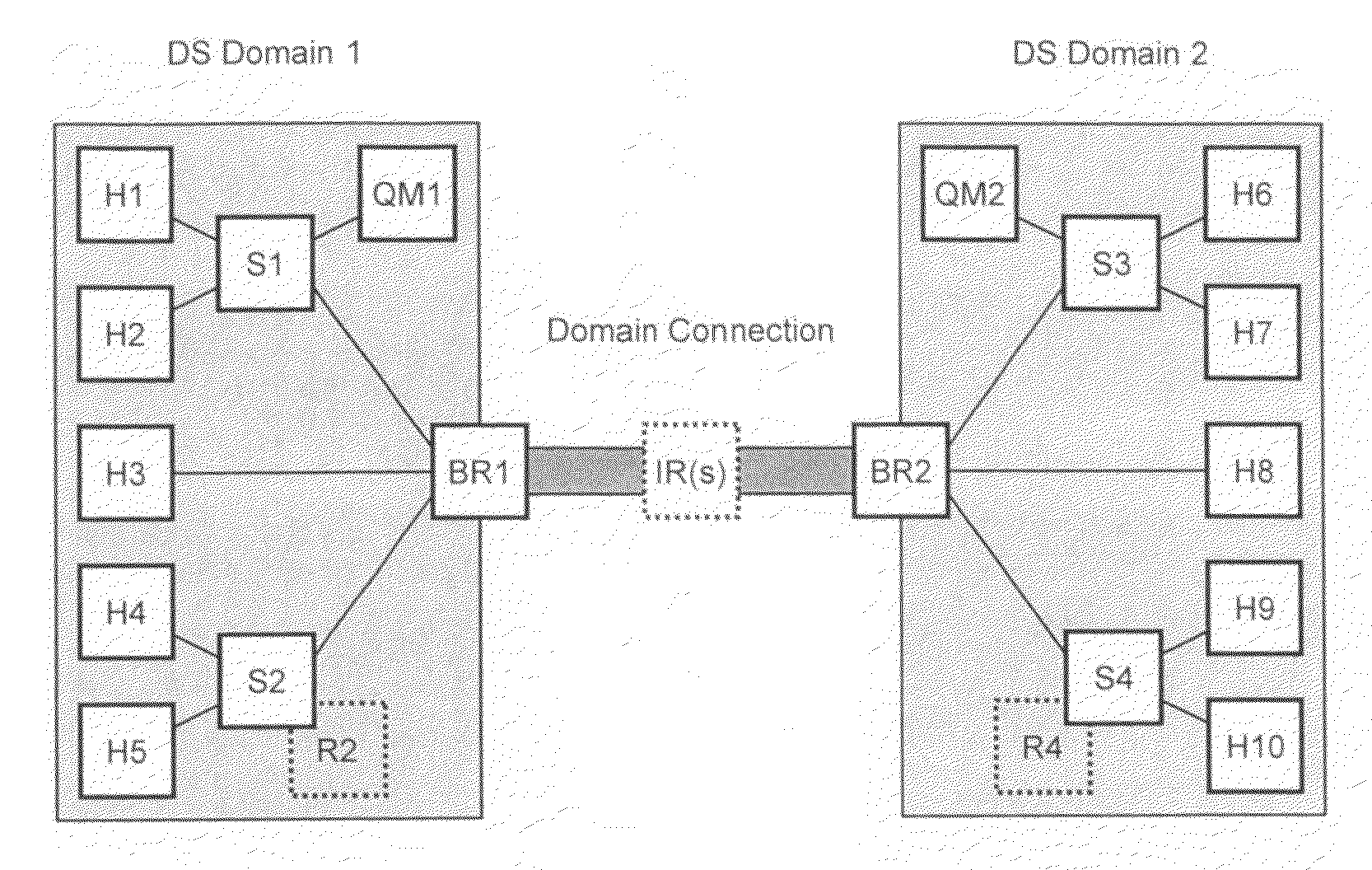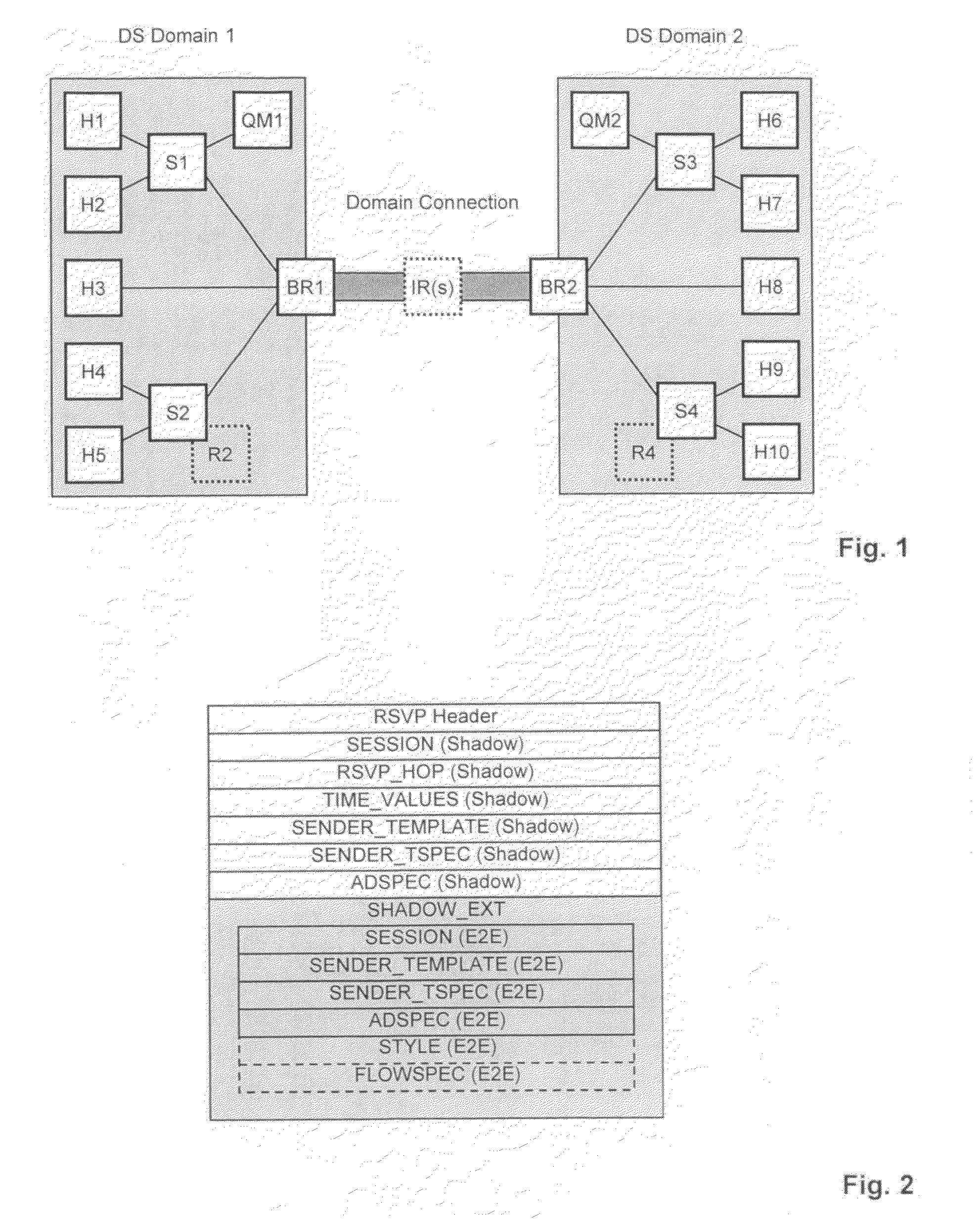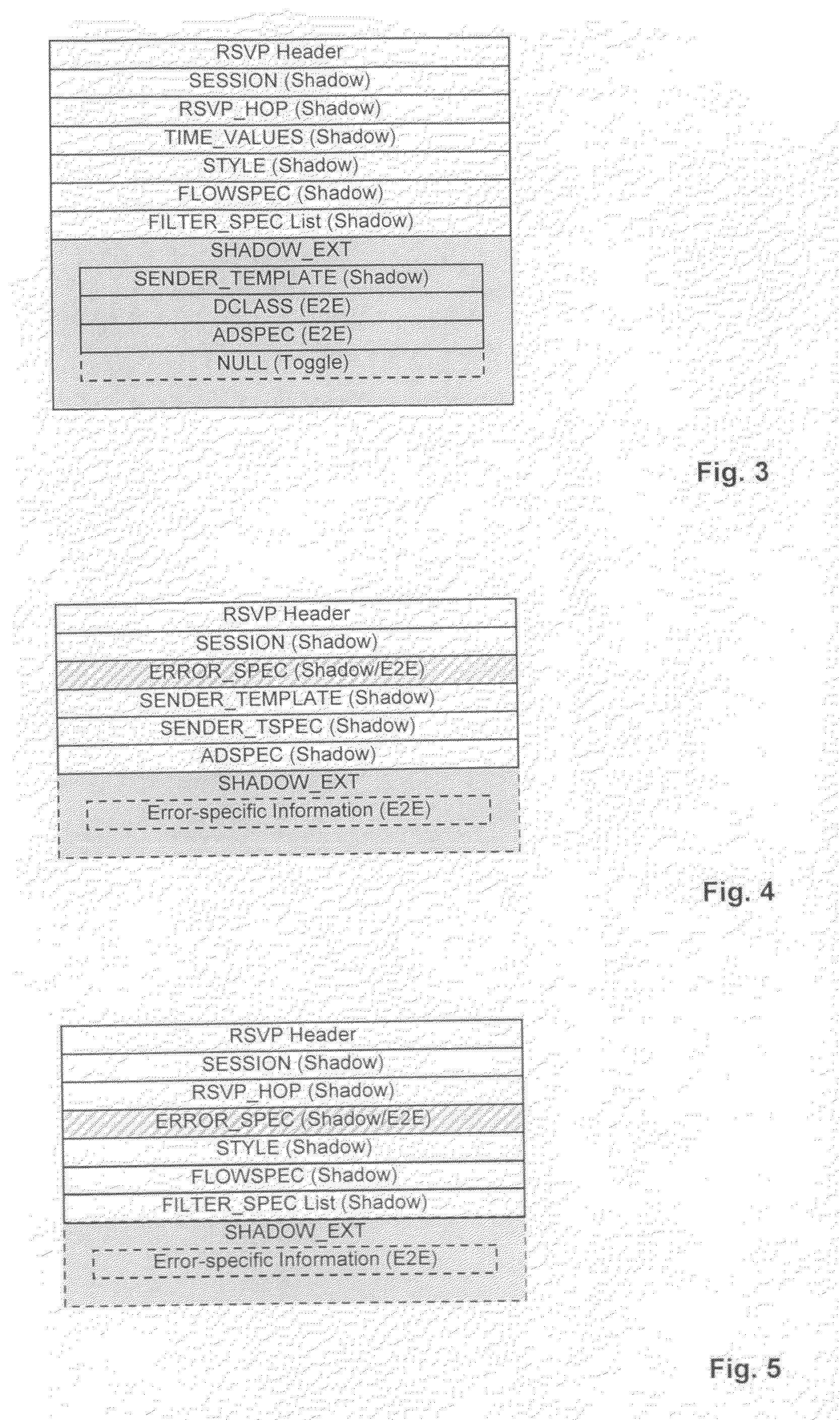Method for managing data transmission according to a quality of service in a network assembly and a computer network system
a network assembly and data transmission technology, applied in the direction of data switching networks, data switching by path configuration, digital transmission, etc., can solve the problem of limiting the scaling properties of intserv/rsvp in large networks, wans, or the internet core, and lack of quantifiable per-flow qos of intserv/rsvp, etc. problem, to achieve the effect of simple and cheap legacy network equipment and enhanced rsvp shadowing stacks
- Summary
- Abstract
- Description
- Claims
- Application Information
AI Technical Summary
Benefits of technology
Problems solved by technology
Method used
Image
Examples
Embodiment Construction
[0057]Embodiments of the invention will mainly be described with reference to an example company network shown in FIG. 1. This network consists of two DS domains (e.g., two sites of a company, or two departments within the same facility) each of which is managed by a local QoS Manager (QM). The domains are interconnected through a domain connection between the boundary routers (BRs) of the domains. Depending on the type of connection (e.g., dark fiber, leased line, VPN tunnel), the domain connection may or may not include one or multiple intermediate routers (IRs). To ease the management and configuration tasks of the QMs, each DS domain uses an unambiguous branched tree topology. The hosts within each DS domain will typically be interconnected via DiffServ-capable L2 switches, except for the BR, which may be part of an internal switching path. Optionally, there might be domain-internal DiffServ-capable routers (R2, R4) instead of some switches (S2, S4), but typically RSVP processin...
PUM
 Login to View More
Login to View More Abstract
Description
Claims
Application Information
 Login to View More
Login to View More - R&D
- Intellectual Property
- Life Sciences
- Materials
- Tech Scout
- Unparalleled Data Quality
- Higher Quality Content
- 60% Fewer Hallucinations
Browse by: Latest US Patents, China's latest patents, Technical Efficacy Thesaurus, Application Domain, Technology Topic, Popular Technical Reports.
© 2025 PatSnap. All rights reserved.Legal|Privacy policy|Modern Slavery Act Transparency Statement|Sitemap|About US| Contact US: help@patsnap.com



